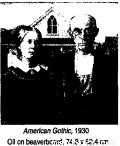题目内容
People are ________ the use of alternative energy sources because the rate ________ we are now assuming fuels like gas and oil is shocking and they may run out one day.
A. wrestling with; by which
B. pushing for; at which
C. catching up on; at which
D. accounting for; on which
 阅读快车系列答案
阅读快车系列答案书面表达
随着因特网的发展,网上购物(Online Shopping)已经成为一种时尚。请根据下表内容,用英语写一篇120词左右的短文,描述网上购物的利与弊,并发表你个人的观点。
网上购物 | |
网购的优点 | 提供方便的服务; 购买的商品价格低廉; 节省时间。 |
网购的弊端 | 商品质量无保证; 退还商品不方便; 长时间上网对身体有害。 |
你的观点(至少两点) | 1….; 2…. |
注意:开头部分已经给出,不计入总词数。
With the development of technology, online shopping is becoming increasingly popular these days and has become a symbol of fashion.
_________________________________________________________________________________
_________________________________________________________________________________
_________________________________________________________________________________
_________________________________________________________________________________
_________________________________________________________________________________
_________________________________________________________________________________


